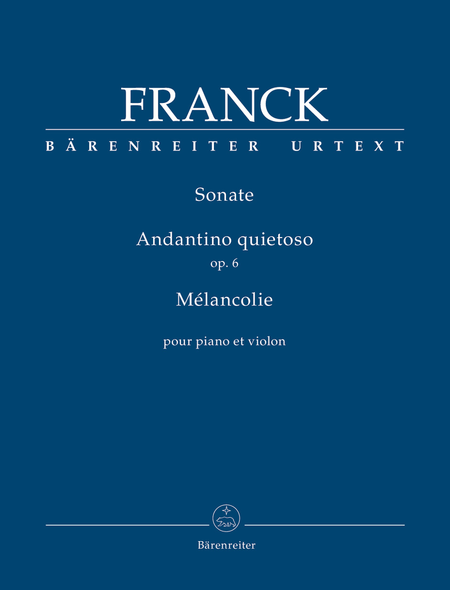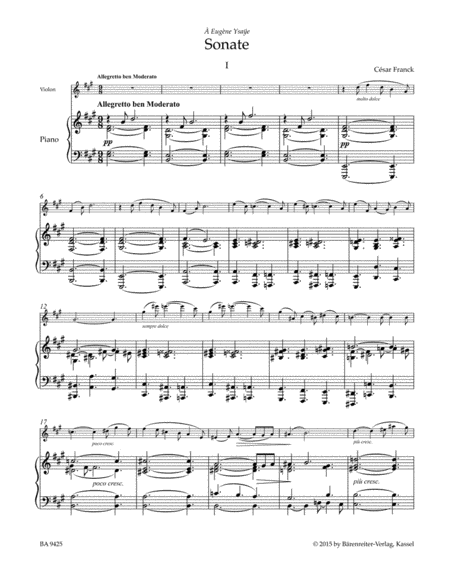Sonate / Andantino quietoso op. 6 / Melancolie for Piano and Violin
-
Ships in 1 to 2 weeks
Details
Description
SKU: BA.BA09425
Composed by Cesar Auguste Franck. Edited by Douglas Woodfull-Harris. This edition: urtext edition. Paperback. Barenreiter Urtext. With an introduction by Gudula Schutz. Performance score, anthology, Part. Opus 6. Baerenreiter Verlag #BA09425. Published by Baerenreiter Verlag (BA.BA09425).ISBN 9790006559169. 31 x 24.3 cm inches. Language: German/English/French. Preface: Schütz, Gudula.
Cesar Franck’s Sonata for Piano and Violin is one of the most treasured works in the violin repertoire, a masterpiece of cyclic form with a gracefulness and expressive force almost paradigmatic for the age of musical Romanticism. This work was composed in 1886 and was dedicated to the Belgian violinist and composer Eugène Ysaÿe.
Franck’s correspondence proves that he was directly involved in the printing of the sonata. Consequently, our new scholarly performing edition draws mainly on the first edition of the separate violin part. For the piano part, the first edition of the version for violoncello and piano, which appeared during Franck’s lifetime, was an important source as many engraver’s errors found in the first printing of the violin version had been corrected in this violoncello version. In addition to these sources, both autograph scores of the violin sonata (Franck’s working copy and his fair copy) were consulted to clarify questionable readings.
Bärenreiter’s new edition also includes two short separate movements for the same instrumentation: the early “Andantino quietoso” op. 6 (1843), a hauntingly beautiful piece composed for performances with Franck’s violinist brother Joseph, as well as “Mlancolie”, first published after Franck’s death in 1911. This second piece is based on a solfège exercise and written at the height of the composer’s creative powers, at about the same time as his famous violin sonata.
The edition is rounded off by an informative text on the genesis and reception history of the three compositions (Ger/Fr/Eng), a complete list of sources, editorial notes and a Critical Commentary (Eng).
About Barenreiter Urtext
What can I expect from a Barenreiter Urtext edition?
MUSICOLOGICALLY SOUND
- A reliable musical text based on all available sources
- A description of the sources
- Information on the genesis and history of the work
- Valuable notes on performance practice
- Includes an introduction with critical commentary explaining source discrepancies and editorial decisions
... AND PRACTICAL
- Page-turns, fold-out pages, and cues where you need them
- A well-presented layout and a user-friendly format
- Excellent print quality
- Superior paper and binding


 Share
Share